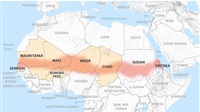The Categories of the Muslim Brotherhood Operating inside the UK

Three categories of individuals and organisations
operating inside the UK can be referred to as “Muslim Brotherhood.” In
decreasing degrees of intensity, these are the pure Brothers, Brotherhood
affiliates and organisations influenced by the Brotherhood.
The Pure Brothers
These are members of various branches of the Muslim
Brotherhood throughout the Middle East (Egypt, Iraq, Libya…) who over the last
fifty years have established a presence in the UK.
Each of these
branches conducts various activities inside the UK aimed at supporting the
activities of the mother organisations in their home countries, at time
overtly, at times covertly (in this regard particularly significant are the
fundraising efforts for Hamas, the Palestinian branch of the Brotherhood).
Most recently significant attention has been devoted
to the activities of members of the Egyptian branch of the Brotherhood living
in London. This small cluster of a handful of senior leaders and young
activists is engaged in media, legal and lobbying efforts aimed at challenging
the current Egyptian regime. The London-based activists appear to be unable to generate
any grassroots support inside the UK but are well connected to other Muslim Brotherhood
activists worldwide.
Brotherhood Affiliates Brotherhood affiliates are organisations
established by individuals with strong personal ties to the Brotherhood but operates
completely independently from any Brotherhood structure and, in most cases, transcends
the national divides that characterise the first tier.
Of the many organisations that fit this description,
arguably the most important is the Muslim Association of Britain (MAB). Over
the last few years this milieu (the informal networks of the MAB) appears to
have lost significant influence for a combination of reasons:
• The departure of key leaders who took leadership
positions in Brotherhood entities in their countries of origin after the
beginning of the Arab Spring
• The negative reaction among significant sections of
Britain’s Islamist settings particularly among second and third generations –
to the departure towards the home 4 countries
of Brotherhood leaders who had long professed to be working mainly for Islam in
Britain
• Internal divisions triggered by personal rivalries
and ideological fissures (on issues such as alliances with the Left or
positions towards Shiism and Iran)
• The severely decreased access to government these
organisations have enjoyed over the last few years.
•
Organisations founded by some individuals with deep ties to the Brotherhood
that have since dwelled in ideological surroundings that are very close to the
movement, such as the Federation of Student Islamic Societies (FOSIS) and
Islamic Relief
• Organisations that trace their origins to the
Jamaat-e-Islami, the Brotherhood’s sister movement in South Asia. Some sections
of this movement seem to have adopted and refined some of the entryist tactics
typical of the Brotherhood, applying them to local politics (as in the case of
Tower Hamlets) or education (as, apparently, in the so-called ‘Trojan horse’
plot in Birmingham). Yet it seems apparent that, at this stage, this milieu operates
in complete independence from members of the Brotherhood.
The goal of the ‘pure Brothers’, such as the
Egyptians currently operating in London, is to support the activities of the
mother groups in their home countries. The aims of the second layer, the
long-time British-based Brothers, and the third, the Brotherhood-influenced
milieus, are arguably different and can be summed up as follows:
• Spread their religious and political views to
British Muslim communities
• Become official or de facto representatives of
British Muslim communities in the eyes of the government and the media
• Support domestic and international Islamist causes
with local Muslim communities and British policy-makers and public.
The first two layers of what has been termed as
Brotherhood comprise only a few hundred activists and a relatively larger
number of sympathisers; they directly control only a dozen or so mosques
throughout the UK. Yet, thanks to a combination of ideological flexibility,
unrelenting activism, large funding, and poor organisation of competing trends,
the Brotherhood networks have in the past shown an enormous ability to exert a
disproportionate influence. At the current stage though it appears that
JeI-linked groups, thanks also to the demographics of British Islam, have
become the most active among non-violent Islamist movements in the country.







